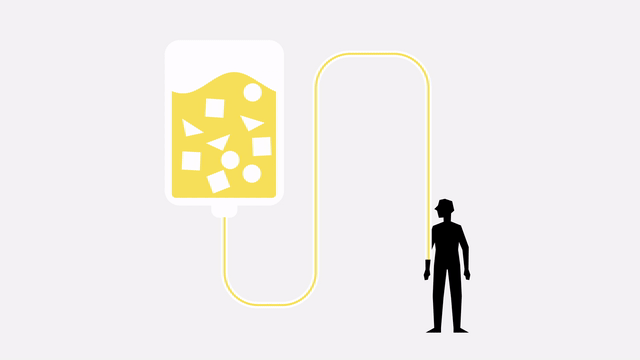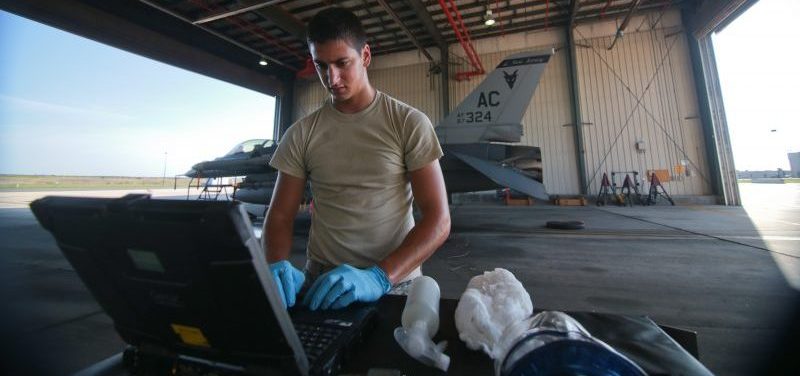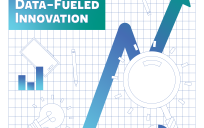THIS ARTICLE WAS WRITTEN IN AUGUST FOR GOVLOOP’S “YOUR DATA IN THE YEAR OF EVERYTHING ELSE.” THE REPORT CAN BE DOWNLOADED HERE.
Nobody was ready for the coronavirus. So, as COVID-19 came crashing down on the U.S. like a wave, first striking the West Coast before spilling into the rest of the country, state and local governments relied on one another to fine-tune their responses.
The State Chief Data Officers (CDO) Network, housed at Georgetown’s Beeck Center, is one such partnership through which states exchanged best practices, resources and information. The open market of ideas helped states plan out their responses and move in stride with or in advance of the crisis, Tyler Kleykamp, Director of the State CDO Network, said.
In these partnerships, states that first noticed COVID-19 spikes – such as those on the West Coast, where the virus was initially discovered on U.S. soil – informed governments in other parts of the country of the steps they took, such as constructing dashboards and establishing data-sharing agreements. Because of the warning, other states had a few extra days to prepare for the surge of cases.
“A couple of days means saving lives,” Kleykamp said.
One common challenge early on was tracking hospital capacity once COVID-19 began to overwhelm facilities. Whereas many states dealt with hospital shortages of beds, they often felt the swell at different times.
Kleykamp noted that many reporting systems were set up to track the number of beds but not the overall capacity. In other words, states only knew the numerator, and not the denominator. These challenges, when caught and addressed on the front end of responses, helped public health authorities brace for influxes and arrange for aid, such as bringing in the National Guard to construct temporary field hospitals.
The National Guard also used data from state and local governments to prepare its response. The Joint Artificial Intelligence Center (JAIC), the military artificial intelligence branch, started Project Salus to prevent shortages in regional supply chains.
With data-fueled artificial intelligence algorithms, the JAIC predicted which places would soon be overwhelmed. Then, the Defense Department (DoD) sent necessary supplies and personnel.
“In the height of the pandemic, we were able to deploy a lot of our medical personnel, as well as other job functions that the military could provide, to help New York City respond to the pandemic,” said Sunmin Kim, Chief of Policy at the JAIC.
Elsewhere, volunteers stepped up to help local and state governments meet COVID-19 demands. The U.S. Digital Response (USDR) is a group of 5,500 unpaid volunteers that answers to governments seeking technological aid during the pandemic. Founded by former U.S. Chief Technology Officers, USDR has taken on more than 100 projects across about half of U.S. states, as of July 2020.
“One thing that I think is really awesome and exciting about our work is we do everything open source, do everything free and, from Day One, when we build something for one city or state or county, we try to make sure it’s customizable for anyone else,” said Raylene Yung, CEO of the U.S. Digital Response.
Initially, Kleykamp and Yung noted, state and local governments’ most dire data need was coordinating health information. Tracking available beds, creating dashboards, and identifying spikes and trends were priorities.
As the pandemic raged, state and local governments largely constructed well-working systems for public health data. But then finances followed, with surging unemployment and reactive economic assistance programs.
After the CARES Act made grants available and distributed funding to state and local agencies, governments had to account for new funding streams. In response, USDR built a tracking and alert system so that Rhode Island and Ohio could capture grant opportunities and funding.
The particular solution was a web-scraping tool that users could configure to find certain search terms. The automated solution then populated a spreadsheet showing all the available grants that matched the desired criteria, Yung said.
Broadly, the value of cross-governmental technology partnerships is that members can diagnose larger trends and needs – an essential part of pandemic responses.
For that reason, USDR built open source software that only had to be tweaked minimally across agencies to work, and the State CDO Network put out best practices and resources based on the experiences of its members to assist other agencies along the way.
“There’s going to be a pretty hard look at, across state and federal government, how data was used and leveraged,” Kleykamp said.
Interested in how the National Institutes of Health is researching and combatting COVID-19? Watch the video below.






Such a cool story on the collaboration between states and the federal government!